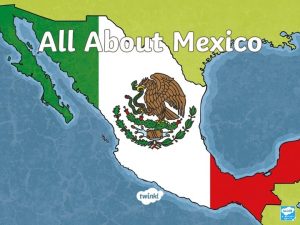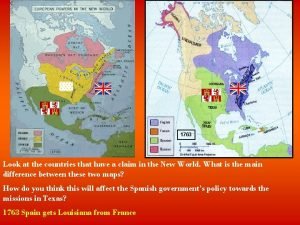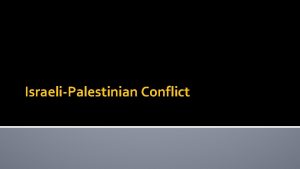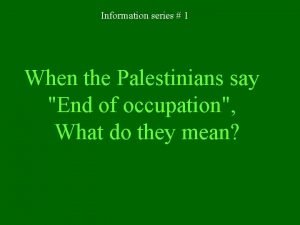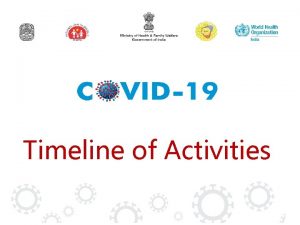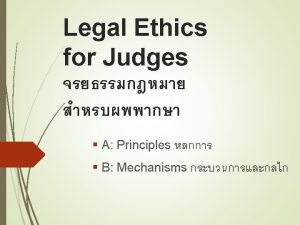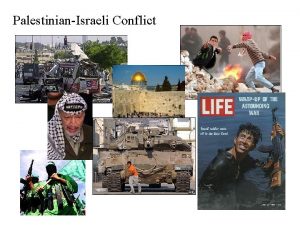Timeline of Israeli Politics 1948 Israeli independence and








- Slides: 8

Timeline of Israeli Politics • • • • • • 1948: Israeli independence and war 1967: 6 -day war; acquisition of the occupied territories 1973: Yom Kippur war, a scare for Israel 1977: Likud triumph in the Knesset 1979: Peace with Egypt 1982: Invasion of Lebanon 1984 -1992: Government of National Unity 1989: First intifada 1991 -1995: Peace negotiations with PLO; peace with Jordan 1992: Labor returns to power 1995: Rabin’s assassination/Peres takes over 1996: Netanyahu and Likud take power in 1 st direct PM election 1999: Barak and Labor take power; second attempt at peace negotiations 2000: Pull out of Lebanon 2000: Sharon visits the Haram al-Sharif; second intifada erupts 2001: Sharon becomes PM in National Unity govt 2002: West Bank barrier planned 2005: Pull out settlers from Gaza; Sharon establishes the Kadima party 2006: Sharon suffers a stroke; Ehud Olmert becomes PM as head of Kadima 2008: Tzipi Livni takes over as head of Kadima; holds early elections 2009: Likud wins elections and Benjamin Netanyahu becomes PM again 0

Israeli political institutions • Knesset (Parliament) – 120 seats (small) for 4 -year terms – Has the most power in Israeli politics – Prime Minister emerges from leading party—most likely to form a government and exercises executive power • President – Figurehead president (currently Shimon Peres) • Courts – Mixed secular and religious courts Knesset • Electoral System – National, closed-list PR system – Very close representation of voter preferences in Knesset seats—but what about governments? – Low electoral threshold (1%, then 1. 5%, now 2%) – Short lived experiment with directly elected Prime Minister in 1996—Netanyahu 1

The Israeli party system • Party system – Principal characteristics: • Extremely fragmented • Historically stable competition between two main centrist Zionist parties • The question of the Israeli center: recent innovation with Kadima as a “bridging” party – Israel as a “party state”—politics is done through parties, and parties are usually quite strong at responding to their constituencies – Challenges of coalition politics • Principal party orientations and leaders – – Likud: Binyamin Netanyahu Labor: Ehud Barak—now Shelly Yachimovich Kadima: Ariel Sharon, then Ehud Olmert—now Tzipi Livni Yisrael Beitunu: Avigdor Lieberman • Smaller parties – Left-wing, liberal parties (like Shinui “change”, Meretz “vitality”) – Orthodox religious parties (like Shas—Sephardic; National Union—advocates transfer of Palestinians out of Israel) – Arab parties (like Hadash—far left-wing/anti-Zionist, Balad) 2

Key party leaders Tzipi Livni Kadima Binyimin Netanyahu Likud Avigdor Lieberman Yisrael Beiteinu 3

February 2009 Israeli Legislative Election Results Party Votes % Seats +/– Kadima 758, 032 22. 47% 28 − 1 Likud 729, 054 21. 61% 27 +15 Yisrael Beiteinu 394, 577 11. 70% 15 +4 Labor Party 334, 900 9. 93% 13 – 6 Shas 286, 300 8. 49% 11 – 1 United Torah Judaism 147, 954 4. 39% 5 – 1 United Arab List–Ta'al 113, 954 3. 38% 4 — National Union 112, 570 3. 34% 4 [A] Hadash 112, 130 3. 32% 4 +1 New Movement. Meretz 99, 611 2. 95% 3 – 2 The Jewish Home 96, 765 2. 87% 3 [B] Balad 83, 739 2. 48% 3 — Total seats in the Knesset 120

Key Israeli political issues • The nature of the state – What is a Jewish state? – European vs. Middle Eastern state • Absorption and integration of immigrants – Ashkenazi vs. Sephardic Jewry, with very different cultures – Where do new immigrants live and how are they incorporated? • Security and national defense – How to defend the state in the possibility of international attack – Massive numbers of citizens with military experience – Perceived threats from Iran, Hizbullah, Hamas • Relationship with Arab populations – Arab population within Israel and in the occupied territories—what rights should they have? • International relations – Balance of peace and balance of threat with Arab states – Ensure appropriate allies for support (active courting of the US) • Economic development – Create a sustainable economy that thrives in the areas of agriculture, technology, tourism 5

Political culture and religion • Key elements of political culture – – Zionism is non-negotiable Deep attachment to land ties to the Biblical past The world is against us, “siege” mentality Egalitarianism and democracy? • The role of Judaism in the state – Only about 20% of Israelis think of themselves as particularly religious – Rise of the role of elite religious figures – Role of halakha (Jewish law) in many aspects of society • Does halakha contradict democracy? 6

Lecture terms—November 7 and November 9 Hosni Mubarak Yitzhak Rabin infitah Binyamin Netanyahu National Democratic Party Ariel Sharon Kifayya movement Knesset Al-Ghad (Tomorrow) Party Proportional Representation Al-Azhar Closed List System Muslim Brotherhood Labor Party Al-Jama’a al-Islamiyya Likud Party Al-Wasat (Center) Party Ashkenazi vs. Sephardim Zionism Kadima Party Menachem Begin Halakha 7
